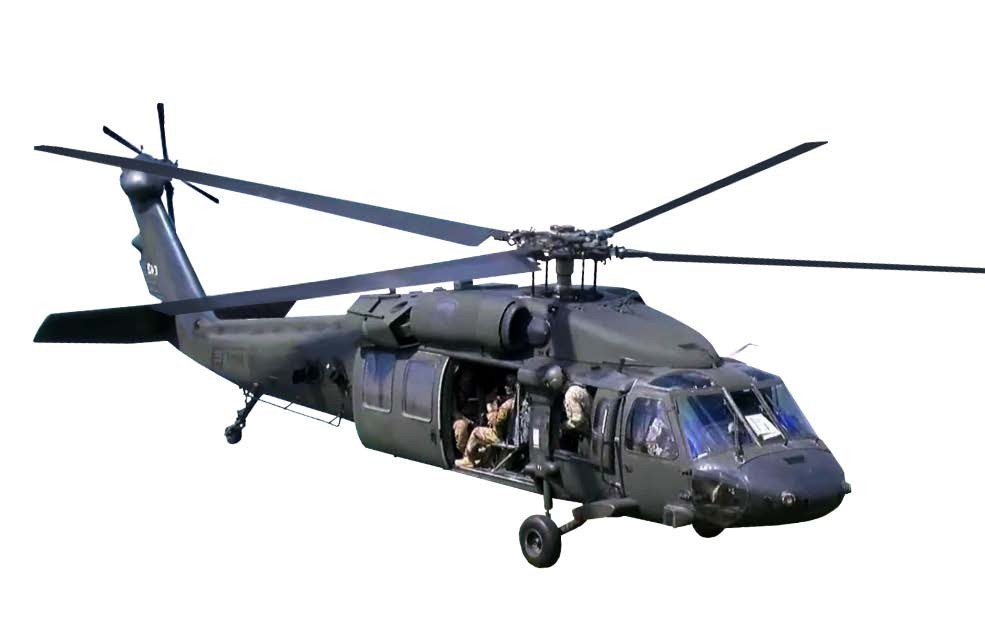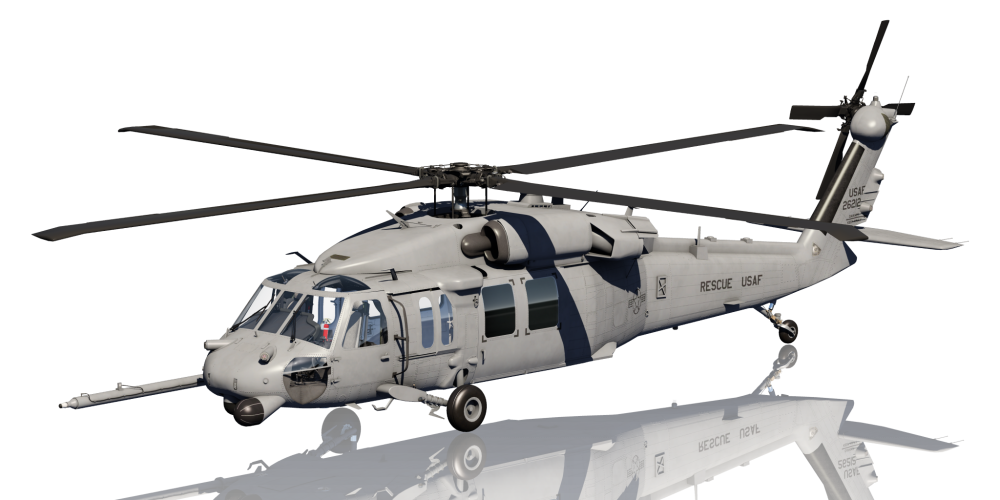The UH 60 and Its Contribution to Airborne Procedures in Vital Goals
The UH 60 and Its Contribution to Airborne Procedures in Vital Goals
Blog Article
Crucial Truths and Insights Concerning the UH-60 Helicopter
The UH-60 helicopter, a foundation of modern armed forces aviation, has actually evolved substantially because its intro in 1979. Distinguished for its flexibility, it includes an advanced layout that fits numerous operational needs, from troop transport to medical emptying. Its innovative avionics and robust building enhance both efficiency and safety and security in diverse atmospheres. Nonetheless, the implications of its design options and functional capacities expand past the combat zone, influencing humanitarian missions worldwide. Understanding the ins and outs of the UH-60's function exposes an intricate story of innovation and adaptation that advantages further exploration.
Background of the UH-60
The UH-60 Black Hawk helicopter was created in the late 1970s as part of the United States Military's campaign to replace the older UH-1 Iroquois. The demand for a much more flexible, resilient, and qualified airplane occurred from the lessons learned throughout the Vietnam War, where the restrictions of the UH-1 emerged. In 1972, the Military started a program to procure a brand-new utility helicopter, culminating in an affordable style phase that saw numerous makers submit propositions.
Sikorsky Aircraft was ultimately granted the contract in 1976, and the first model of the Black Hawk flew in 1974. Its design concentrated on sophisticated technology, including a four-blade blades system and a modular building and construction that enabled for rapid field upkeep and versatility to various goals. Officially getting in solution in 1979, the UH-60 quickly became the foundation of Army aeronautics, serving in a plethora of functions such as army transport, medevac, and logistical assistance.
Over the years, the Black Hawk has undergone different upgrades and alterations, solidifying its standing as a vital property in military procedures around the world (UH 60). Its robust efficiency proceeds to fulfill the progressing needs of modern war
Design and Functions
Including advanced engineering principles, the UH-60 Black Hawk features a smooth, wind resistant layout that boosts its efficiency and efficiency. This twin-engine utility helicopter is defined by its unique shape, with a high-mounted, four-blade main rotor system that provides exceptional lift and stability. The rotor blades are built from composite products, adding to their resilience and lowering maintenance requirements.
The fuselage is created for optimal weight circulation and architectural integrity, permitting an optimum gross weight of approximately 22,000 pounds. The cabin layout promotes adaptable configurations, accommodating various objectives, from army transport to medevac procedures. Furthermore, the cabin is outfitted with innovative avionics, consisting of electronic screens and multi-functional systems that improve situational understanding.
The UH-60 likewise incorporates composite products in its airframe, which lower radar cross-section and enhance survivability in hostile environments. Its retracting touchdown gear improves the aircraft's profile, more adding to its aerodynamic effectiveness. Generally, the thoughtful combination of design components and products not only boosts the Black Hawk's operational capabilities yet likewise ensures that it continues to be a crucial asset for goals across diverse surfaces and conditions.
Functional Capabilities


The UH-60 is furnished with sophisticated avionics and navigating systems, helping with operations in difficult climate condition and low exposure situations. Its robust style enables it to execute in severe and high-altitude temperature level problems, better prolonging its operational variety. The helicopter's twin-engine configuration provides redundancy and improved performance, making certain dependability throughout useful content essential missions.
Furnished with sophisticated interaction systems, the Black Hawk enhances situational understanding and control amongst armed forces systems. In addition, its capability to carry out airborne reconnaissance and support close air assistance goals emphasizes its important duty on the battlefield. In general, the UH-60 Black Hawk's functional capabilities are a directory testament to its value in contemporary armed forces air travel, properly satisfying the needs of a quickly advancing operational landscape.

Versions and Alterations
Various versions and alterations of the UH-60 Black Hawk have actually been established to satisfy certain objective demands and enhance its operational versatility. The most notable variant is the UH-60L, which presented updated engines, enhanced avionics, and improved cargo capacity. In addition, the UH-60M alternative functions advanced electronic avionics, an extra effective engine, and enhanced survivability systems, making it suitable for a wider array of goals.
The HH-60G Lead Hawk is one more specialized variant, made for search and rescue procedures. It is furnished with sophisticated navigation systems, external gas containers, and clinical evacuation capabilities. The MH-60R Seahawk is enhanced for anti-submarine war and maritime operations, flaunting sophisticated radar and sonar systems.
Additionally, the armed versions, such as the AH-60, are customized for direct strike duties, featuring tool systems like rockets and gatling gun. The UH-60's versatility is more showcased in its ability to be fitted with mission-specific equipment, consisting of cargo hooks for transport, troop transport interiors, and reconnaissance sensors.
These versions and alterations highlight the Black Hawk's important duty in modern armed forces procedures, showcasing its ability to adapt to progressing objective demands.
Role in Humanitarian Efforts
The UH-60 Black Hawk has tipped up to play a critical duty in altruistic efforts around the globe, showing its flexibility past armed forces applications. This multi-mission helicopter is furnished to carry out a selection of missions, consisting of clinical emptyings, catastrophe alleviation, and logistical support in difficult environments.
During natural catastrophes, such as typhoons and earthquakes, the Black Our site Hawk has confirmed indispensable for transporting relief materials and personnel to influenced locations. Its capacity to operate in ascetic conditions permits it to reach remote locations that may be inaccessible by ground transportation, guaranteeing prompt support to those in requirement.
In Addition, the UH-60 is usually utilized for clinical emptying missions, quickly transferring injured individuals to clinical facilities. Its advanced clinical abilities, including room for medical personnel and tools, make it possible for life-saving interventions throughout critical scenarios.
In global operations, the Black Hawk often teams up with humanitarian organizations, showcasing its adaptability and dependability. By leveraging its capabilities, the UH-60 not just sustains army purposes but additionally plays an essential duty in alleviating and conserving lives suffering during altruistic dilemmas worldwide.
Final Thought
The UH-60 helicopter has established itself as a crucial asset in military procedures given that its intro, identified by its robust design and functional capacities. The UH-60's payments prolong past battle, playing a considerable function in humanitarian initiatives worldwide.
The UH-60 Black Hawk helicopter was developed in the late 1970s as component of the United States Military's initiative to change the older UH-1 Iroquois.Incorporating innovative design principles, the UH-60 Black Hawk features a sleek, wind resistant layout that improves its performance and effectiveness.Enhanced style and progressed design permit the UH-60 Black Hawk to stand out in a variety of operational functions. On the whole, the UH-60 Black Hawk's operational capabilities are a testimony to its relevance in modern armed forces aeronautics, effectively fulfilling the demands of a quickly evolving functional landscape.
Different variations and adjustments of the UH-60 Black Hawk have been created to meet certain mission requirements and enhance its functional flexibility.
Report this page